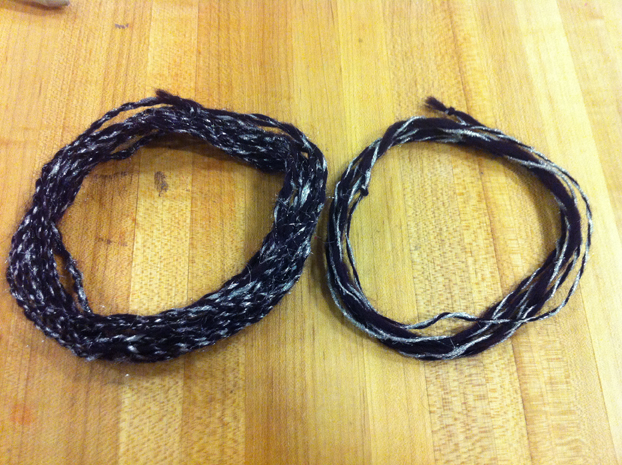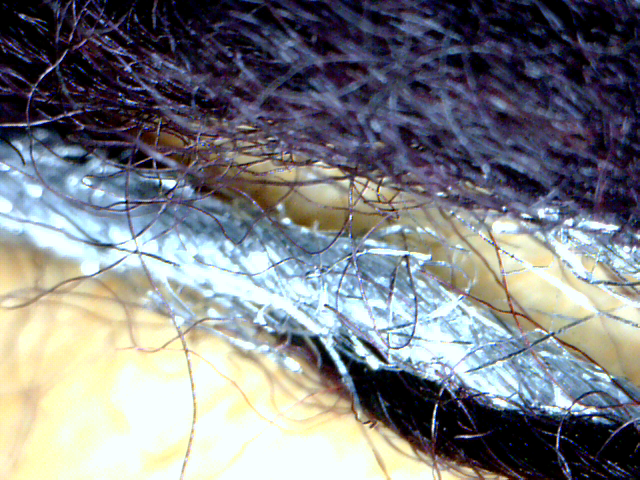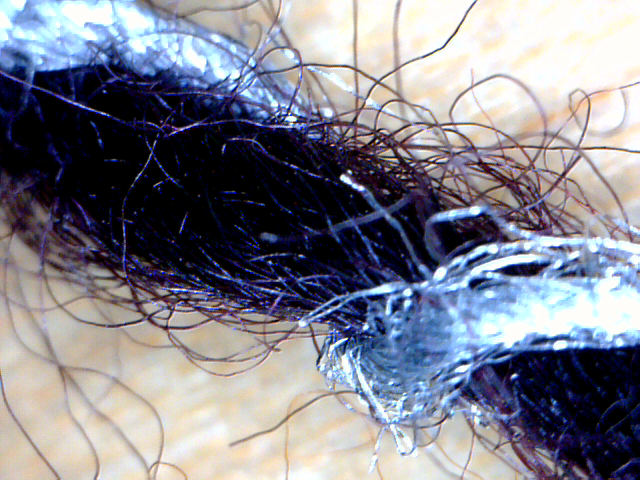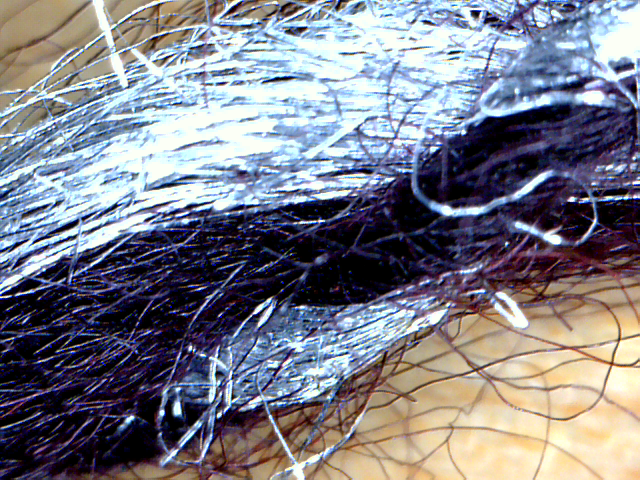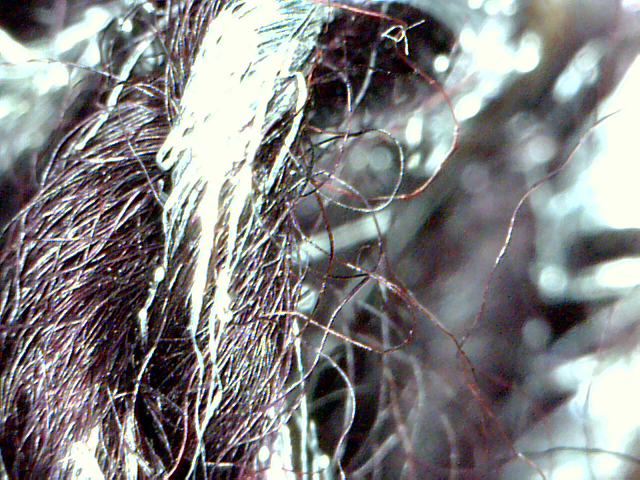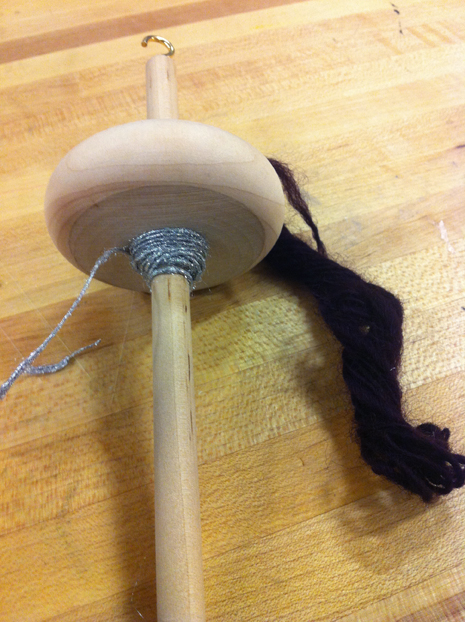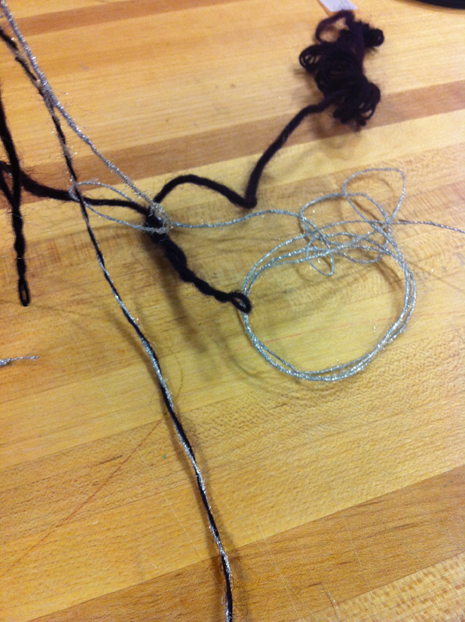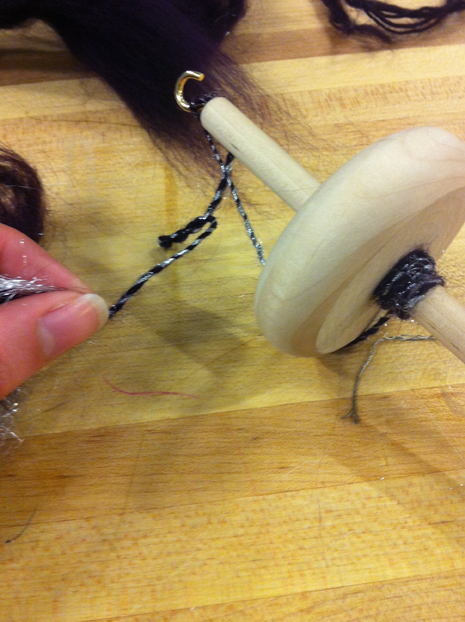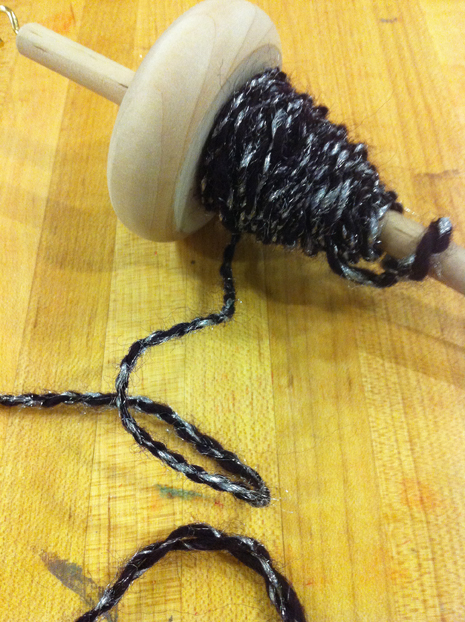AllumiYarn: Conductive Aluminum Yarn
by N.Tari
I have always been interested in the history of weaving. It is such an old, amazing technique used by women all over the word to make fibers into fabric. Last monday I was inspired by our workshop and am really enjoying the process of spinning. It feels magical and also meditative.
The yarn that I spun is constructed on wool and aluminum fibers structured in two different methods. I decided to make one yarn (yarn #1) that is a single of both the aluminum and the wool ply together, and a second (yarn #2) that is a mixture of the two materials and spun into a single then plied. I then compared the two yarns in conductivity. The conductivity is different. Also, I found that the conductivity changes in each as the yarn is stretched.
Observations & Measurements:
Yarn #1
1 Yard in length
2 ply
Fiber length: Wool 60mm/fiber, Alluminun 100mm/fiber
Twist: Single is clockwise, Double counter clockwise, 2.5 twists/inch
Diameter: 2,000µm
Yarn #2
3 Yard in length
2 ply
Fiber length: Wool 60mm/fiber, Alluminun 100mm/fiber
Twist: Single is clockwise, Double counter clockwise, 3 twists/inch
Diameter: 2,000µm
Yarn #2: The measurements in Ω variy whenn the yarn is measured at rest and stretched. This is what I expected when making it. When the yarn was measured at rest (a section about 4 inches in length) it measured between 6 and 12 Ω. When stretched the resistance dropped (varing between 1 and 3 Ω . Over a longer section of yarn the conductivity drops and the resistance increases. Even though the conductivity is less the yarn behaves the same, at rest is less conductive that stretched. Yarn #1 reacts the same and appears to have a higher conductivity in general. This makes since due to its structure, one single strand of both the aluminum and wool then plied together. Most likely Yarn #2 has a more dynamic structure causing the resistance to be higher in general.
USB Microscope Pictures:
Process:
